Considering Floyd Bennett Field was NYC's first municipal airport, I have to admit a great deal of disappointment in how the area, now a National Park and with many of its old, original structures on the US National Register of Historic Places, has not been kept up.
Wayward grass sprouts up between cracks, old hangars from the 1930's bear the forbidding "condemned" sprayed-on boxed x, weeds shroud an old on-site police station, and kids can be seen haphazardly milling about the old runways on their way to the renovated recreation buildings in two of the old hangar buildings.
To see very little interest in the main building/visitor's center, which seems to stand lonely in the middle of a vast parking lot, is heartbreaking. Across the airstrip, "Hangar B" is open to the public and contains old planes, but to gaze at Hangars 1-4, with their ornate carved, beautiful "FBA" stones above doorways slowly crumbling since 1971, I cannot help but wonder why this beautiful historic park isn't receiving more government funding.
If the state can validate spending $750,000 on exotic fish to distract people waiting for the Staten Island Ferry, why can't Floyd Bennett Field have more money to upkeep an incredible set of buildings, key to New York's history?
"Mayor Bloomberg, who attended the unveiling, believes in the calming power of fish."
I hear he also believes in the great forces of eminent domain.
First municipal airport. Sparkly fish.
Priorities, Bloomberg.
Abandoned fridge in the hallway of FBF's old police precinct. The building has sadly been gutted by scrappers.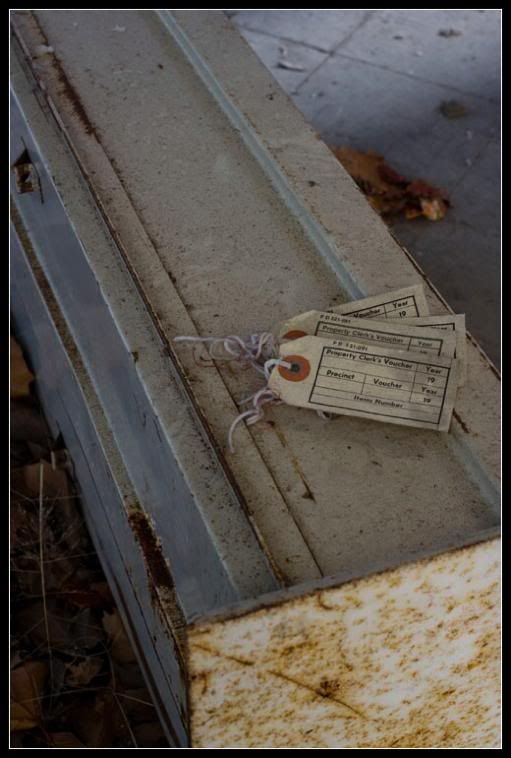
ID tags on a shelf in the abandoned police precinct.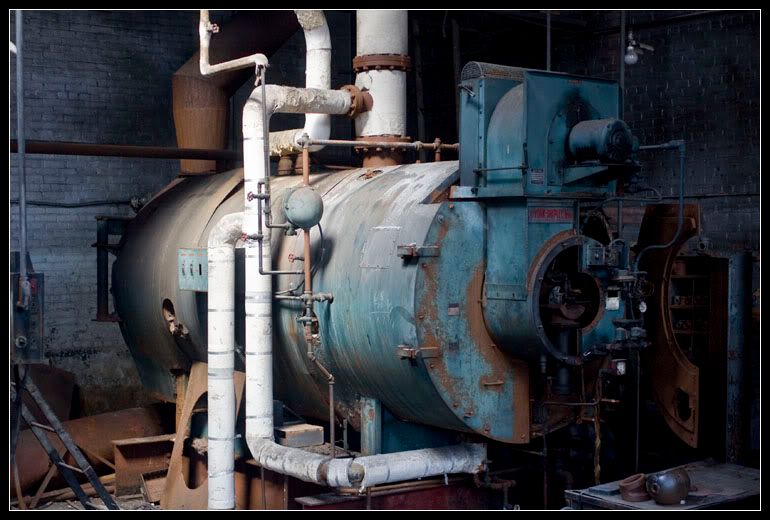
Boiler in the back of Hangar 3.
Pressure gauge in the boiler room that provided power to the hangars.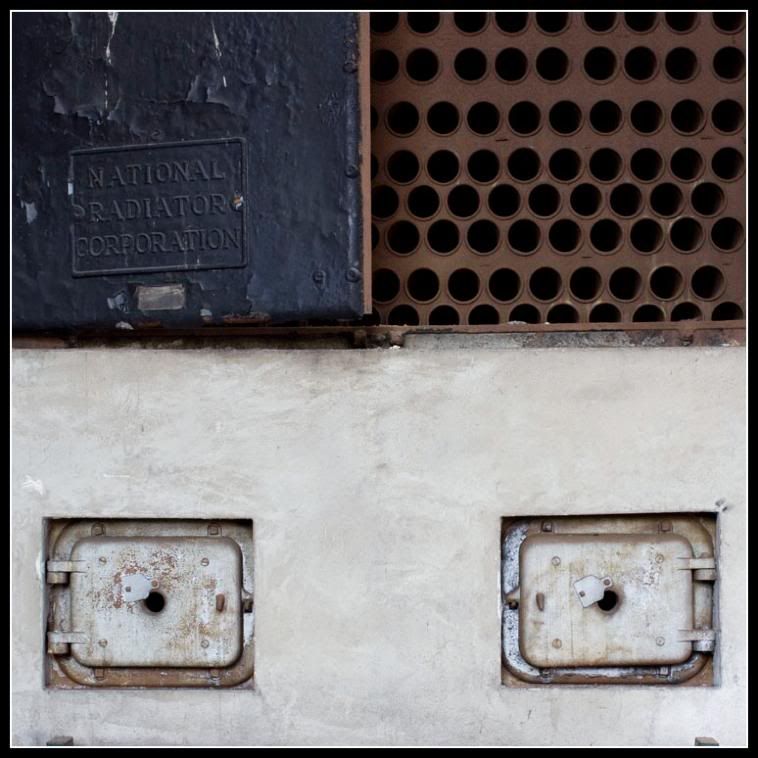
Detail on a boiler door.
Sink and surprisingly intact mirror in the boiler room.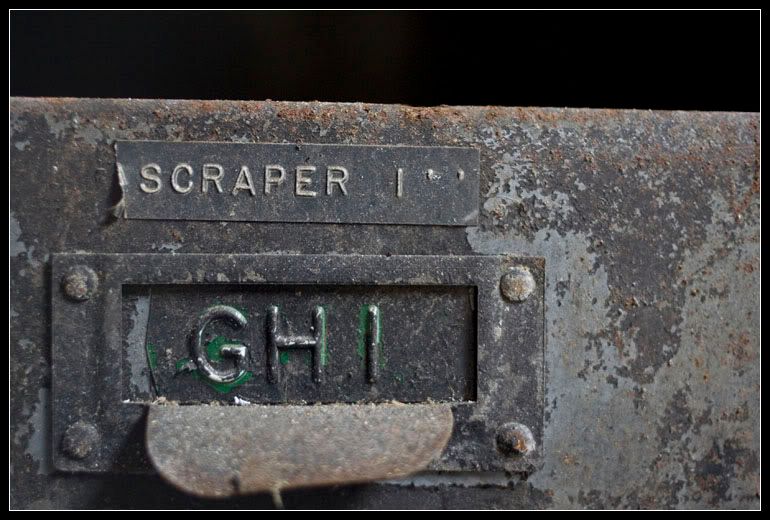
Disused shelves, all meticulously labeled, lay strewn about.
I can only hope that Paterson may consider giving more funding to historic parks as his term continues.
Thursday, March 20, 2008
Floyd Bennett- defunct airfield
Friday, March 14, 2008
On the topic of "Eminent Domain"
While disappointed to see the flurry about New York's "Spitzer Swallows" and all the more annoyed to see "Kristen" getting so much undue attention (let us all please remember she is still naught but a pricey Jersey whore who, despite having moved from the dirty Jerz to NYC, likely didn't even know she was sleeping with its governor), I am letting myself get a little excited at the prospect of what David Paterson could bring to the table, notably in terms of his views on eminent domain which counter a lot of Spitzer's policy.
From the New York Sun article:
"If David Paterson as governor displays the opposition to eminent domain that he showed as a state senator, several high-profile development projects in New York City could be derailed or delayed, including a Columbia University expansion, the Atlantic Yards project inBe still my beating heart- is there a chance the Atlantic Yards project can, at the very least, be curtailed?, and the transformation of Willets Point in Queens. "
And let's hope the weather holds this weekend for Coney Island reopening this Sunday. I'm personally quite excited for the Band Organ Rally, on Sunday March 16 from noon to 4:30.
"Coney Island USA and the Lady Liberty Chapter of the Automated Musical Instrument Collectors' Association kick off the summer season with our annual Band Organ Rally!"
Sign me up.Thursday, March 13, 2008
Admiral's Row- further exploration
An addendum to my previous post on Admiral's Row- I'd like to briefly address the controversy surrounding its potential for preservation.
A lot of people on both sides of the debate like to bring on the discussion of "Well, if the Row had been properly taken care of 20 years ago..." Had the Row not been neglected for over 20 years, would the buildings be salvageable? Of course. Do most of the remains of the buildings remain salvageable? To one degree or another- yes. A lot of the wood additions in the back of the buildings have collapsed and need to be demoed. The two buildings on the Western side of the campus seem to have seen the worst wear; a wood addition that once housed a pool table, standing in spring of 2005, documented on the Officer's Row Project, now has collapsed in on itself, crashing into a pile to the ground.
But then again, a gorgeous piece of plasterwork from Quarters I (documented as dangling as early as summer 2006), which I commented to my companion The Kingston Lounge "Must surely have collapsed by now," actually remains steadfast, blowing in the breeze, a beautiful remnant of a past century's aesthetic.
Moulding below stairwells litter the Row, their every detail still crisp beneath flaking paint.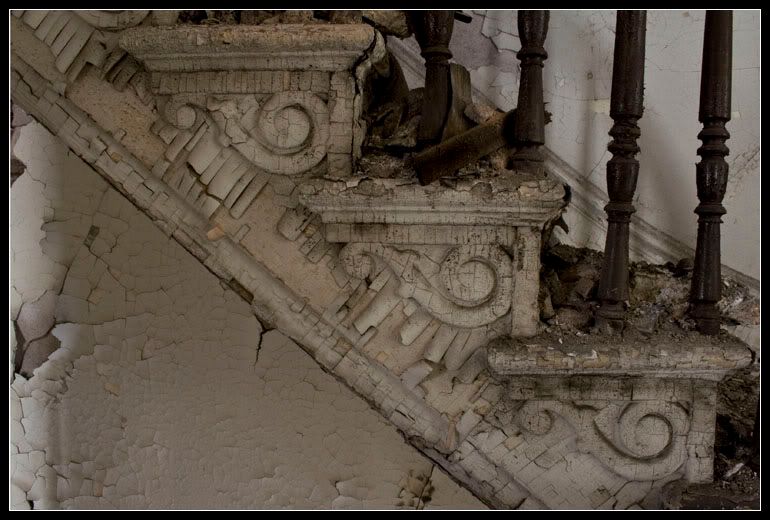
Even more ornate crystal, milk glass and the rare brass doorknobs remain, glimmering in their old fixtures, many floors above a ground level which, if not to the incredible credit of a bygone era's architects, should not be able to hold my weight, nor the weight of my tripod. Compared to many of the other doomed historic structures I spend my time trying to document, these stairs barely creaked.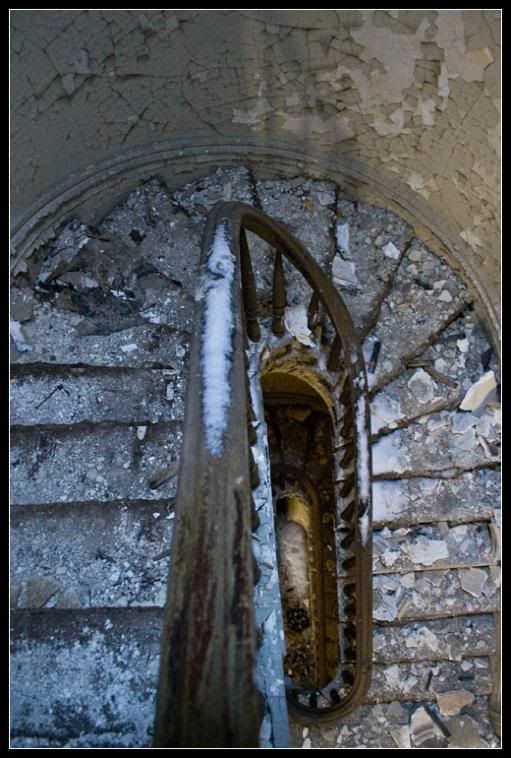
Top of the grand staircase in Quarters B- plaster and snow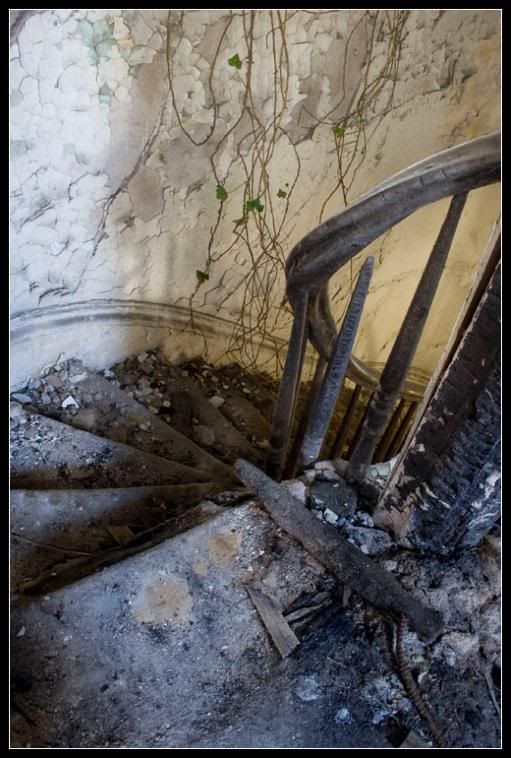
From the burned-out attic level of Quarters D. Still strong, if not charred.
An upward view of the same staircase. Carpet remains on all the stairs.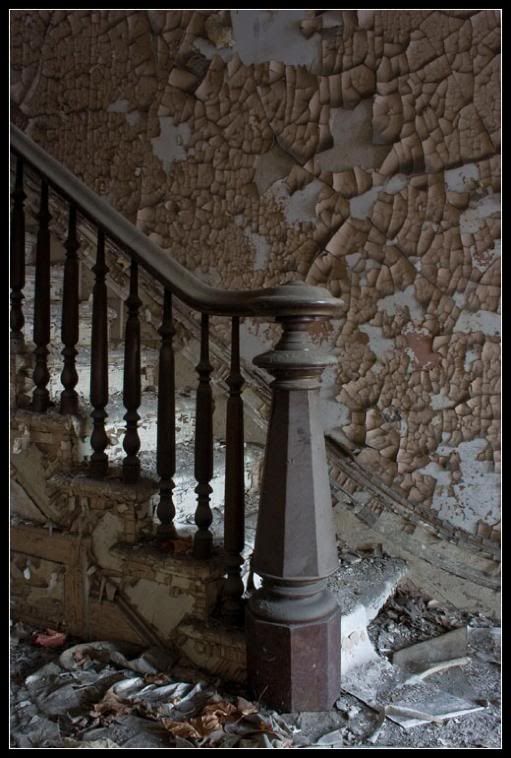
Bottom banister in Quarters G. All the flourishes in each of the 10 buildings varies.
The banisters and railings in most of these buildings are more intact than those in the brownstone I live in.
Did I mention beautiful flourishes? Sadly I have no photos of the interiors of any of the cedar-lined closets. They're as pristine as though they'd been abandoned yesterday.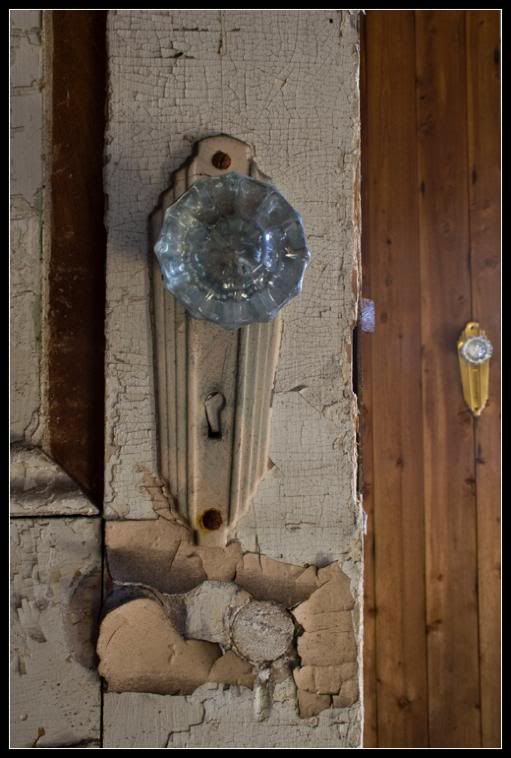
Doorknobs receding.
Nouveau faceplate.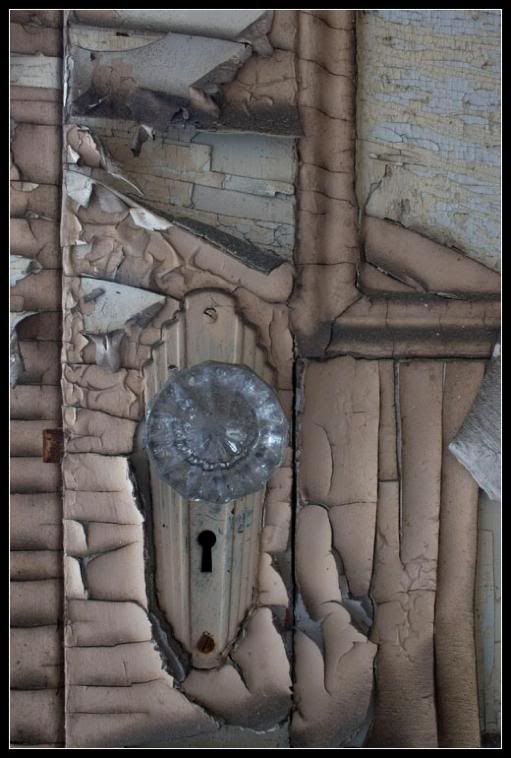
One of my favorite tiny details from the Row.
As always, there's always more to be said, more to be done, more to research and more to document. In the meantime, Admirals Row was the hot topic at Gothamist, Brownstoner and Curbed, in no small part thanks to the blog posted by Nathan Kensinger. More to come tomorrow.
Tuesday, March 11, 2008
Admiral's Row- an introduction
Admiral's Row, also known as Officer's Row, is located in the heart of the Brooklyn Navy Yard and currently faces a potentially imminent destruction. Former home to naval officers and their families, the Row consists of ten houses spread between six buildings. Additionally there is an old stable building, a greenhouse, tennis courts, a groundskeepers residence, and a plethora of other tiny ancillary buildings between the main houses and the orchard that used to grow out back.
Building H- historic drawing
The main buildings were all constructed between 1864 and 1901 and now stand in crumbling disuse in Fort Greene, isolated from a busy road in the historic neighborhood by an imposing fence. The Row is now facing a potential full tear-down order from the National Guard, where the gorgeous buildings would be demolished in favor of a grocery store and (more importantly)- a parking lot. Some preservationists are fighting for the historic buildings to be rehab'd, but the future of the Civil War-era buildings is far from certain. More to come.
A few views from within the crumbling grandeur of Admiral's Row: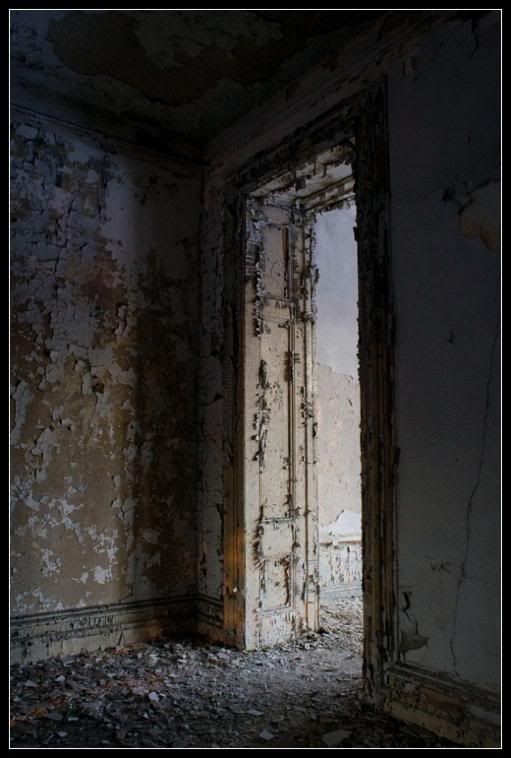
Pre-dawn light in Quarters G >
>
Solarium and intruding vines in Quarters G >
>
Fallen fixture in Quarters E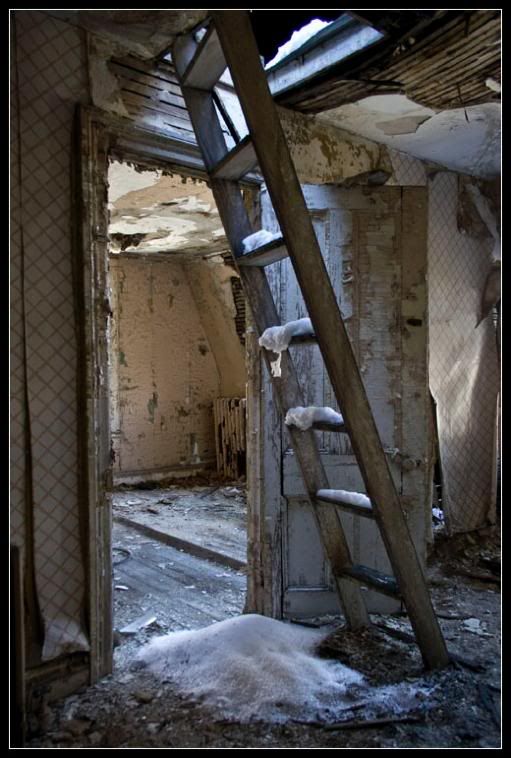 >
>
Snowy attic stairs to the roof in Quarters D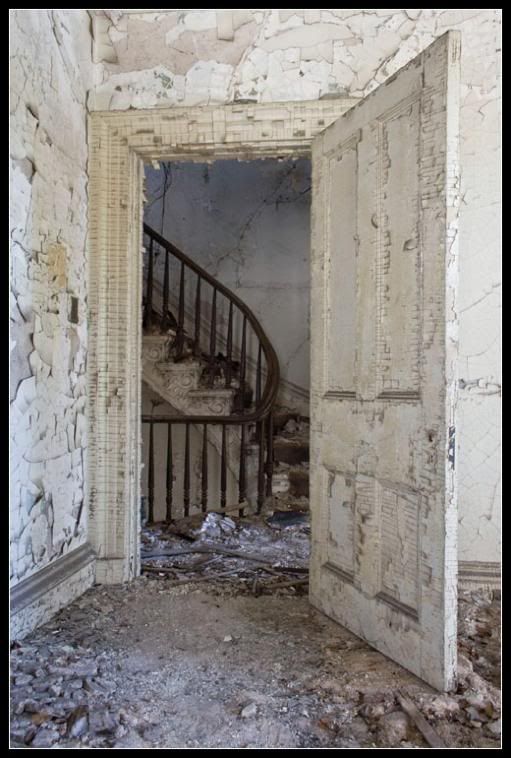
A welcoming second floor doorway, Quarters E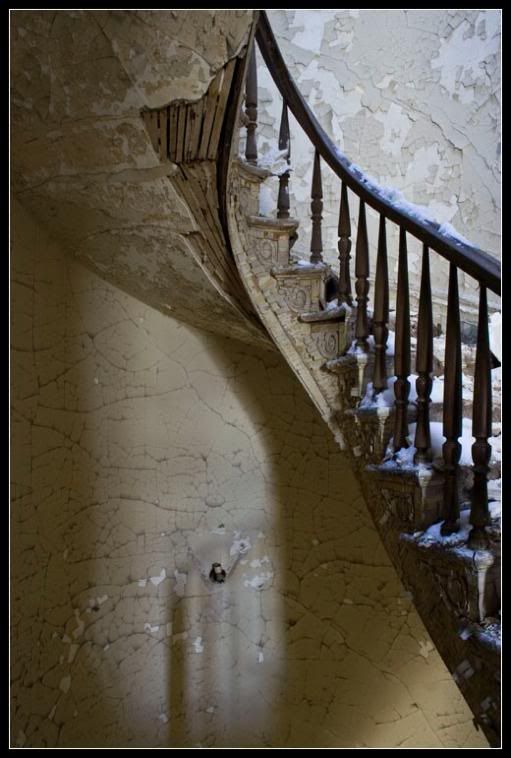
Grand staircase between third and fourth floor, Quarters B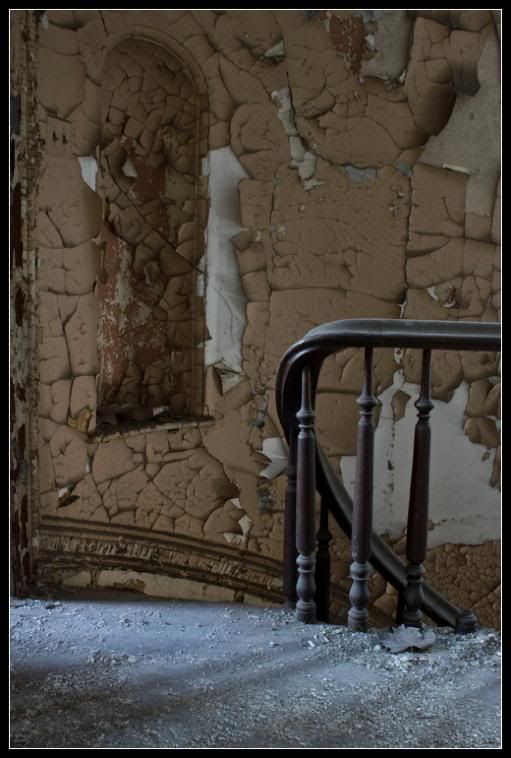
Top railing curve and empty alcove, Quarters G
Other blogs on Admiral's Row:
Admiral's Row- more photos -The Kingston Lounge
Brooklyn Navy Yard: Admiral's Row -Nathan Kensinger Photography
Further Reading:
Battle lines drawn over Navy Yard’s ‘Row’ future -The Brooklyn Paper
Admiral's Row: "Extremely High Level of Historic Integrity" -Brownstoner
